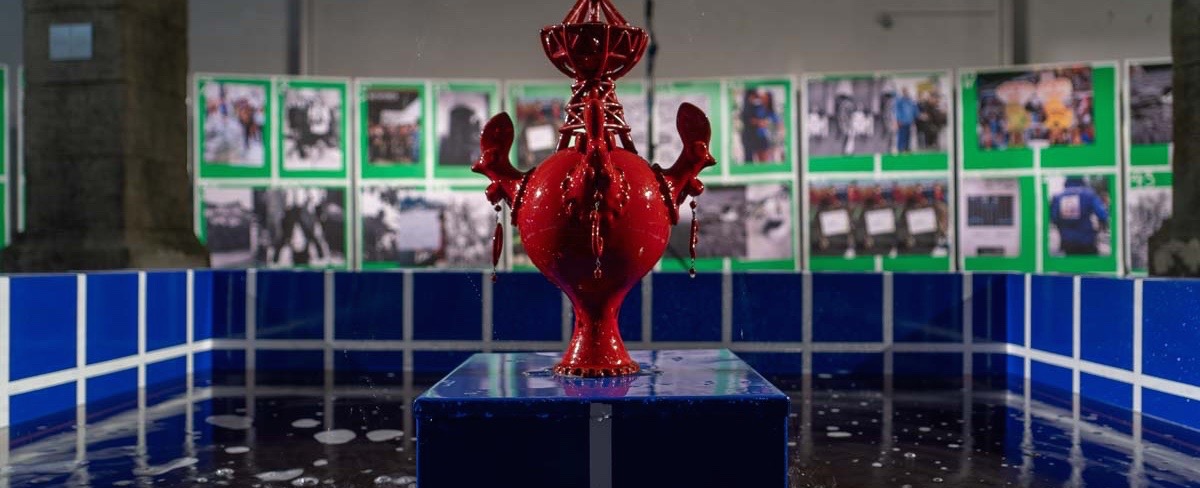
The Land of Cockaigne, the fourth exhibition put on by I-DEA
Stories, legends and fantastic characters returned to life in the fourth exhibition put on by I-DEA,
"The Land of Cockaigne", curated by Navine G. Khan-Dossos and James Bridle. The exhibition
was an artistic project based on Basilicata's extremely rich archival heritage, and told the story of
the role of imagination in our lives. It was opened in the hangar at Cava Paradiso on 18 October,
and bore witness to the great vivaciousness of the history that has given life to Matera and Basilicata, and how it still has a major impact on our lives today. From musical instruments built
with wood from its trees, to skins and the green screens from cinema sets, the fourth I-DEA
exhibition put the many symbols of the land and its meanings on display. From the donkey
Nicoletta, the symbol of the anti-nuclear protests in Scanzano, portrayed by Tony Vece in a
number of photographs in the exhibition, to artefacts made by citizens in papier maché workshops
under the coordination of artisan Raffaele Pentasuglia. Navine G. Khan-Dossos and James Bridle
also left a number of precious elements from the previous exhibitions-including Lionetti's
engravings and Luigi di Gianni's films- in the space, which was designed by Elisa Giuliano, Martha
Schwindling and Antonio Elettrico for the Open Design School.
Following “The Land of Cockaigne”, I-DEA will be preparing for another transitional phase from 18
November before putting on its fifth and final exhibition of 2019, "Inhabiting the Archives, Life,
Movement and Collection". This is the final stage of the project, and takes the form of an exhibition
curated by Pelin Tan and Liam Gillick. The project is based on archives selected as part of the
research carried out by the internationally renowned curator and the artist, and represents a critical
approach to modernism, in line with the history of the territory from the 1950s to today.
The “Land of Cockaigne” draws on the ancient, the living and the future. Inspired by the spirit of
Cockaigne, the curators have brought together ancient plants and modern forgeries, pre-war
documentaries and modern successes, bagpipes and satellites and science and rituals with the
aim of demonstrating the many ways in which the wealth of the present gives new life to the past.
The exhibition has been drawn from numerous different archives, from the Accademia Nazionale di
Santa Cecilia, the Archivio di Etnomusicologia, the Agenzia Spaziale Italiana, the Centro di Geodesia Spaziale Giuseppe Colombo, the Archivio Domenico Notarangelo, the Archivio Luchino
Visconti, the Fondazione Gramsci, the Archivio di Stato di Matera, the Alberico Larato private
collection, the Gianfranco Lionetti private collection, the Nicola Scaldaferri private collection, the
Consorzio di Bonifica della Basilicata, e-GEOS, the Fondazione Cineteca di Bologna, NASA, the
Volontari della Parrocchia B.V.M. del Carmelo, Wikimedia Commons and Titanus Film. A fountain
with a cuckoo sculpture designed and created by Francesco Mitarotonda has also been prepared
specifically for the exhibition.





